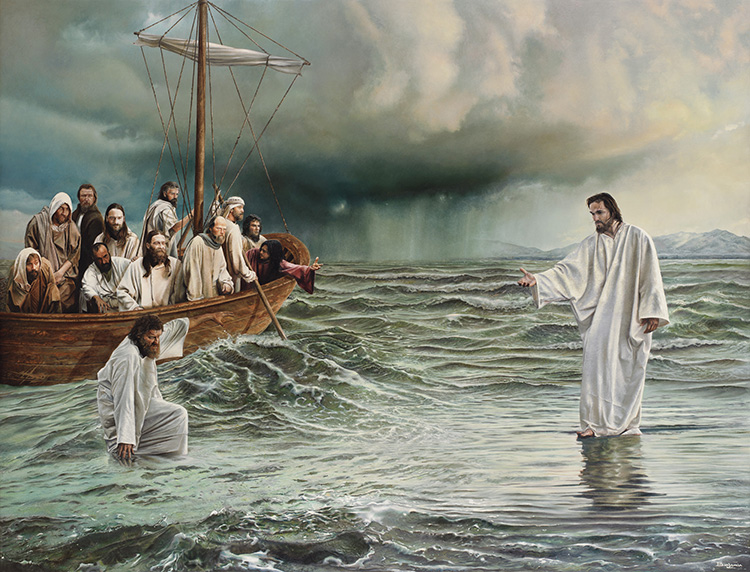Page 405
“All things are governed in the bosom of this triad.” — LYDUS: De Mensibus, 20.
“Thrice let the heaven be turned on its perpetual axis.” — OVID: Fasti iv.
“And Balaam said unto Balak, Build me here seven altars, and prepare me here seven
oxen and seven rams.” — Numbers xxiii. 1, 2.
“In seven days all creatures who have offended me shall be destroyed by a deluge, but
thou shalt be secured in a vessel miraculously formed; take, therefore . . . and with seven
holy men, your respective wives, and pairs of all animals, enter the ark without fear;
then shalt thou know God face to face, and all thy questions shall be answered.” — Bagavedgitta.
“And the Lord said, I will destroy man . . . from the face of the earth. . . . But with thee
will I establish my covenant. . . . Come thou and all thy house into the ark. . . . For yet
seven days and I will cause it to rain upon the earth.” — Genesis vi., vii.
“The Tetraktys was not only principally honored because all symphonies are found to
exist within it, but also because it appears to contain the nature of all things.” –
THEOS. OF SMYRNA: Mathem., p. 147. OUR task will have been ill-performed if the preceding chapters have not demonstrated that Judaism, earlier and later Gnosticism, Christianity, and even Christian Masonry, have all been erected upon identical cosmical myths, symbols, and allegories, whose full comprehension is possible only to those who have inherited the key from their inventors.
In the following pages we will endeavor to show how much these have been misinterpreted by the widely-different, yet intimately-related systems enumerated above, in fitting them to their individual needs. Thus not only will a benefit be conferred upon the student, but a long-deferred, and now much-needed act of justice will be done to those earlier generations whose genius has laid the whole human race under obligation. Let us begin by once more comparing the myths of the Bible with those of the sacred books of other nations, to see which is the original, which copies.
There are but two methods which, correctly explained, can help us to this result. They are — the Vedas, Brahmanical literature and the Jewish Kabala. The former has, in a most philosophical spirit, conceived these grandiose myths; the latter borrowing them from the Chaldeans and Persians, shaped them into a history of the Jewish nation, in which their spirit of philosophy was buried beyond the recognition of all but
Page 406
the elect, and under a far more absurd form than the Aryan had given them. The Bible of the Christian Church is the latest receptacle of this scheme of disfigured allegories which have been erected into an edifice of superstition, such as never entered into the conceptions of those from whom the Church obtained her knowledge. The abstract fictions of antiquity, which for ages had filled the popular fancy with but flickering shadows and uncertain images, have in Christianity assumed the shapes of real personages, and become accomplished facts. Allegory, metamorphosed, becomes sacred history, and Pagan myth is taught to the people as a revealed narrative of God’s intercourse with His chosen people.
“The myths,” says Horace in his Ars Poetica, “have been invented by wise men to strengthen the laws and teach moral truths.” While Horace endeavored to make clear the very spirit and essence of the ancient myths, Euhemerus pretended, on the contrary, that “myths were the legendary history of kings and heroes, transformed into gods by the admiration of the nations.” It is the latter method which was inferentially followed by Christians when they agreed upon the acceptation of euhemerized patriarchs, and mistook them for men who had really lived.
But, in opposition to this pernicious theory, which has brought forth such bitter fruit, we have a long series of the greatest philosophers the world has produced: Plato, Epicharmus, Socrates, Empedocles, Plotinus, and Porphyry, Proclus, Damascenus, Origen, and even Aristotle. The latter plainly stated this verity, by saying that a tradition of the highest antiquity, transmitted to posterity under the form of various myths, teaches us that the first principles of nature may be considered as “gods,” for the divine permeates all nature. All the rest, details and personages, were added later for the clearer comprehension of the vulgar, and but too often with the object of supporting laws invented in the common interest.

Moe is the founder of GnosticWarrior.com. He is a father, husband, author, martial arts black belt, and an expert in Gnosticism, the occult, and esotericism.


![How the South Saxons received Eadbert and Eolla, and the West Saxons, Daniel and Aldhelm, for their bishops; and of the writings of the same Aldhelm [705 A.D.] | Book 5 | Chapter 17 How the South Saxons received Eadbert and Eolla, and the West Saxons, Daniel and Aldhelm, for their bishops; and of the writings of the same Aldhelm [705 A.D.] | Book 5 | Chapter 17](https://www.gnosticwarrior.com/wp-content/plugins/contextual-related-posts/default.png)


It really is disturbing that you invest all this time in ancient mysteries and “cracking the code” but you can not see what is right in front of you. The “Gnostics” have been in control of this planet for a very long time. What great freedoms have free masonry won you? What paradise has your “hidden hand” crafted? It is written that a good tree can not bear evil fruit nor a corrupt tree bear good fruit. What is the fruit of this world? War, hunger, poverty and genocide-these are the fruits of the “enlightened.” Your words are sweet but they turn bitter when consumed.